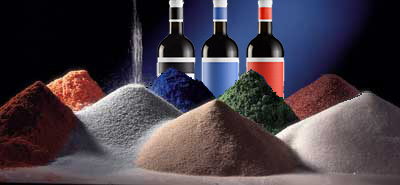Full Disclosure: Additives in Wine
I have taught at San Diego State University’s Business of Wine Program for several years. During my California Wine Intensive course, I always talk about reading the back label of a wine to have a better understanding of how involved in the production was the winery. Was it “cellared and bottled by”, “produced and bottled by” or “estate grown, produced & bottled by”? They get a kick out of seeing how many labels we see in the market place which have very little to do with growing grapes or even making the wine. The TTB mandates that the front label displays the type of grapes, where they come from, when harvested and the alcohol level. On the back label they tell us how much involvement the winery had in the production process. However, the back label omits something very important; what was added during production.
Why is wine so different from other consumer goods? Why isn’t wine held to the same requirements other packaged goods must adhere? There are two sides to this argument. Wine makers would have to change labels every vintage. The additives and additions change from vintage to vintage. Most of the additives added are harmless. Stricter labeling laws would result in higher priced wines. On the other side of the argument, people want to know what is in the bottle. Were there any additives or flavorings added to the product? In the mind of most people, wine is a natural product and it is what it is, fermented grape juice aged in oak. Only if that was the truth. Unfortunately, most wines are full of additives. Granted most additives are there to improve the wine.
In 1987 wineries were forced to mention the use of sulfites, people magically developed headaches and allergies and blamed sulfites. Sulfites have always been in wine to prevent bacteria growth. Amounts used vary from region to region and producer to producer. When it became required to list on the label, people’s buying habits changed. Most did not care, but others whom were more sensitive, started to look at bottles to see if the wine contained sulfites. I guess we can say they became wiser consumers. Of course we know that the headaches are alcohol related and not so much from sulfites. Funny thing is even though alcohol level is on the label, most do not read it. They would rather blame chemicals for their discomfort.
Consumers are very worried about ingesting non conventional chemicals. Most consumers have no idea what goes into a bottle of wine. Just when they were trying to get our heads around sulfites, here are some other additives we may see in wine: yeasts, tannins, bentonite, dried fish bladder, gelatins, egg whites, sugar, tartaric acid, malic acid, lactic acid, calcium carbonate, acetaldehyde, dimethyl dicarbonate, mega purple, oak chips, pvpp, potassium sorbate and the list goes on. Many of these additives might seem familiar since they are in a lot of our packaged foods. We have become used to reading the back of labels and are okay when we see the word “calcium” or “potassium”, we don’t bat an eye. But mega purple? This is why I don’t buy Velveta cheese it has apocarotenal coloring. Some of these additives help stabilize wines and are an important part of wine making. However, others are there to modify wine or rather, improve poor quality wines. Kind of like the coloring added to Velveta, used to improve the color of poor quality cheese stuff.
Worst case scenario is when the two buck chucks of the world use fining agents that release arsenic into the wines. How many people would still buy a $2 wine if the label said “some ingredients are known to cause cancer” and in bold letters arsenic. Safe or unsafe, consumers have the right to know what is in the bottle. I think its time for full disclosure in the wine industry. Let people make wiser decisions when buying wines. Hold wine companies accountable for trying to sell us swill by modifying with additives and slapping on an eye-catching label. It would also make producers of expensive wines focus on production in the vineyards and not the laboratory.
In my opinion if it is served in a package, then let us know what is in the package. We have a right to know. I don’t care if you modify the wine so that it fits a certain flavor profile, but let us know you are doing it. Otherwise we will think that Pinot Noir is supposed to be purple. Hopefully one day we can read the back label and know who, when, where and how the wine was produced. Where do you stand on this?










1 Comment
Danny Keiller
I have been interested in wine headaches for several years. The histamines in wine seem to be the culprits. Highest levels are in sparkling wines, then red wines and lastly white wines with great overlap. Some studies have been done in Denmark but not widely understood. My recommendation for taking a non-sedating antihistamine a couple of hours before drinking has been astonishgly successful in anecdotes from my friends (Claritin or Zyrtec).